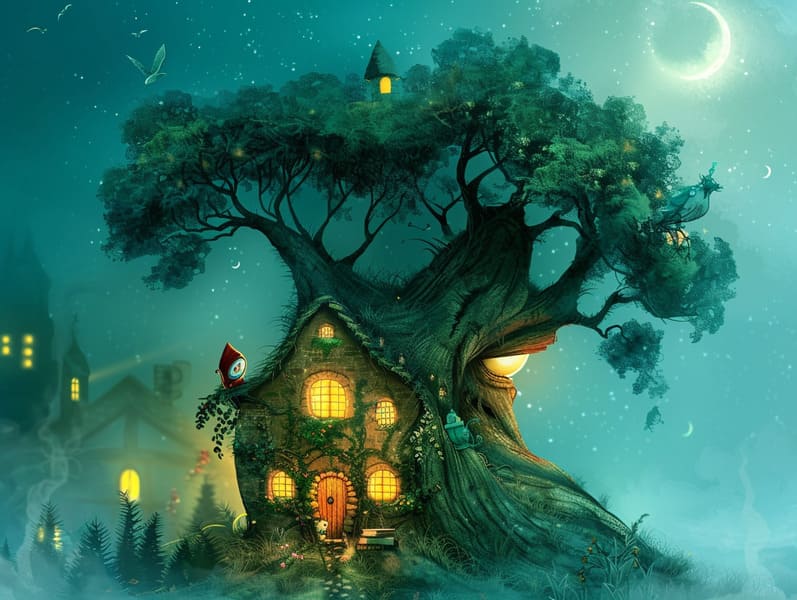The Rise of Traditional Fairy Tales with Their Unceasing Splendor.
The Rise of Traditional Fairy Tales with Their Unceasing Splendor.
Blog Article

Ancient fairy tales have old origins. These tales have been transmitted from one generation to the next far before they were ever transcribed. They arose from a variety of civilizations, including Western traditions. They were initially passed along among elders, often carrying themes and messages aligned with the societal norms and beliefs of the time.
The Brothers Grimm, the two Grimm brothers, were among the first to collect and release many of these beloved tales. Their volume, "Grimm's Children's Stories," included classics like "Cinder Maid," "Hansel and Gretel," and "The True Story of Snow White," which have since become cornerstones in the world of children's fairy tales. Similarly, H. C. Andersen's fantastical narratives, such as "The Mermaid," and "The Duckling that Could," have touched hearts worldwide, securing their place in the pantheon of beloved fairy tales.
Despite being ancient, traditional fairy tales remain as significant as ever, especially as children's bedtime stories. These delightful tales are now available in various formats, including colorful picture books, magical animations, and online fairy tales.
Their unwavering allure can be linked to several charming aspects:
Ethical Lessons: Traditional fairy tales often offer important moral lessons. Fairy tales like "The Shepherd Boy and the Wolf" teach the merit of integrity, while "The Tortoise and the Hare" demonstrate the virtues of tenacity and modesty. These tales offer young readers clear distinctions between virtue and vice, developing their moral compass in a kind yet lasting way.
Empathy and Awareness: Old fairy tales frequently include heroes facing struggles and tests, prompting kids to empathize with their struggles and encourage their triumphs. For instance, "The Tale of Beauty and the Beast" reveals the value of valuing inner qualities to realize the inner core of a being, cultivating understanding and discernment.
Cultural Recognition: Many fairy tales are deeply ingrained in the cultural contexts from which they developed. Delving into these narratives can provide captivating looks into different cultures, developing a sense of world awareness and awareness.
Imagination and Creativity: The supernatural elements in classic fairy tales—enchanted lands—fire up children’s inventiveness. These fairy tales carry readers to otherworldly realms, enlivening fantastical thinking and a sense of astonishment that remains a lifetime.
Traditional fairy tales are not only alluring but also educational. They function as fantastical tools in enhancing various mental and emotional abilities in the young. When old fairy tales are spoken out loud, they strengthen speech development by teaching new lexicon and sophisticated sentence structures. This practice also develops listening abilities and mental focus, as children focus on every detail, looking forward to see what happens next.
Furthermore, examining the themes and characters of old fairy tales can nurture evaluative skills and thought processes. Children are instructed to find patterns, anticipate outcomes, and make sense of cause and effect. These debates also facilitate the young communicate their thoughts and feelings, adding to their emotional intelligence.
In today’s modern era, the availability of web-based fairy tales has made these narratives more reachable than ever. Online resources and software make available broad selections of ancient fairy tales that can be viewed or played anytime, anywhere. Fairy tales told out loud are particularly widespread, featuring an fun way for little ones to experience these fantastical tales. Voice books and read-aloud videos carry characters and settings to life, often augmented by mesmerizing melodies and tunes that enhance the storytelling journey.
The everlasting appeal of ancient fairy tales lies in their ability click here to change to the present while staying true to their key morals. Contemporary adaptations of these tales often introduce more inclusive protagonists and modern settings, making them familiar to today’s audience. However, the main ideas of fortitude, understanding, and lawfulness remain unchanged, continuing to strike a chord with audiences of all ages.
Traditional fairy tales also offer a sense of ease and knowability. They make accessible a well-structured narrative with a clear beginning, middle, and end, often winding up with the closure of conflicts and the triumph of virtue over corruption. This constancy can be easing for kids, making known a sense of security in an inconstant world.
Timeless fairy tales continue to spellbind and enlighten new generations, maintaining their splendor and pertinence in modern society. As bedtime stories for kids, they feature a perfect blend of enchantment and education, fostering moral values, empathy, and creativity. The availability of digital fairy tales and the well-received status of fairy tales narrated guarantee that these classic stories remain attainable to new generations.
By keeping and conveying these narratives, we continue to cherish the rich tapestry of myths and cultural heritage. Whether you are viewing a artistically illustrated book, accessing a cyber collection, or listening via an voice book, the grandeur of famous fairy tales is always within reach. These narratives remind us of the persistent essence of stories and its ability to unify us across centuries and lands.
If you are reading a vibrantly illustrated book, enjoying a online library, or listening through an sound book, the wonder of traditional fairy tales is always within reach.
These fairy tales show us of the persistent presence of tales and its ability to gather us across eras and regions, forming a connection that captivates and teaches alike.